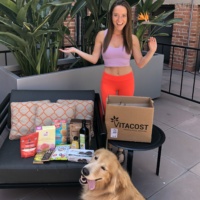
Gluten can be sneaky. I know how overwhelming it is when you first go gluten-free. I want to help you by understanding what to look for and what to avoid. This blog post highlights foods where gluten may be hidden, in addition to the code words for gluten aka the words you need to look out for when reading labels.
Food labels usually specify “wheat” in the ingredients list or in a “contains wheat” statement but the FDA does not require such warnings for barley or rye. This is because the FDA does not consider barley or rye to be major allergens. Barley and rye = gluten so that’s why it’s so important for you to carefully read the labels and ingredients of everything you consume.
Additionally, some products and restaurants may have a different process or recipe so a naturally or typically gluten-free food may indeed contain gluten.
Foods Where Gluten May Be Hidden:
- Imitation Crab — California rolls usually contain gluten
- Restaurant Eggs – some restaurants (like IHOP) add pancake batter to their egg mixtures to make them more “fluffy & sweet.” Note that eggs are naturally gluten-free but this is why you always need to tell your server that you are gluten-free and to ask questions about what you’re ordering
- French Fries — fries are naturally gluten-free but not if fried in same oil as gluten-containing foods. I only eat fries that are cooked in a dedicated GF fryer.
- Licorice — most brands use gluten as a binder
- Chocolate — some chocolate brands contain barley malt aka gluten but it’s not clearly labeled:
- Lindt truffles (except for the white chocolate truffles) are not gluten-free due to barley malt. Their high cocoa content chocolate bars from EXCELLENCE line (70%, 78%, 85%, 90%, 95%, 99% and 100%) are gluten-free.
- The original Milky Way bar is also not gluten-free because it has malted barley. Two flavors, Milky Way Caramel and Milky Way Dark, are gluten-free.
- Other brands that contain barley malt aka gluten are: Crunch, 100 Grand, Whoppers
- And more chocolate brands that are not gluten-free since they contain wheat flour or have gluten fillings like cookies/pretzels: Kit Kat, Twix, Reese’s Take 5, Butterfinger Crisp Bar, Ferrero Rocher
- Soy Sauce — most soy sauces contain gluten so be sure to use GF tamari sauce instead
- Salad Dressings — these may contain flour, soy sauce, or malt vinegar
- Marinades and BBQ sauce — these may contain flour, soy sauce, or malt vinegar
- Broth and Stock — some can contain gluten
- Meat Substitutes & Imitation Meat Products — many meat substitutes contain seitan or other forms of gluten as a binder
- Veggie Burgers — some contain gluten to act as a binder
- Corn Flakes and Crisp Rice Cereal — some contain barley malt
- Sliced Deli Meats — some may contain gluten as thickeners; it’s best to stick with pre-packaged deli meat that is labeled as gluten-free
- Milkshakes — some milkshakes are made with malt
Code Words for Gluten:
It’s important to read the labels of everything you consume. Many brands will label their products as gluten-free to make it easier for you but you still need to investigate further. It’s important to read the entire ingredient label and not just rely on the allergen disclaimer. Even if you ate this product before, production procedures and ingredients can change at any time. Once you know the code words for gluten, then you can identify GLUTEN on food labels. Check the ingredient label for the following key words which generally means GLUTEN:
- wheat
- barley
- rye
- malt
- malt flavoring
- maltose
- bulgur
- farro
- spelt
- wheat starch
- wheat bran
- wheat germ
- couscous
- cracked wheat
- durum
- einkorn
- emmer
- semolina
- triticale
- farina
- fu
- gliadin
- seitan {meat substitute using in some vegetarian dishes}
- Brewer’s yeast
- oats {oats themselves don’t contain gluten but are usually processed in facilities that produce gluten-containing grains and may be contaminated so I only eat certified gluten-free oats}
- oatmeal
- oat bran
- oat flour
- graham flour
- kamut
- matzo
- soy sauce
If you are unsure whether a product is gluten-free, contact the manufacturer for clarity on their ingredients and what they do to prevent cross contamination.
In Conclusion:
Following a gluten-free diet can be difficult at times. I truly believe that knowledge is power. The more you know and understand, the easier it gets. You CAN enjoy eating!
If you’re looking for products that ARE safe, you can customize your own product searches across 1,000 brands that I’ve personally tried here. You can filter these 1,000 products by certified gluten-free, made in a dedicated gluten-free facility, naturally gluten-free, and gluten-free options, in addition to other dietary restrictions like vegan, paleo, dairy-free, soy-free, nut-free, etc.


































